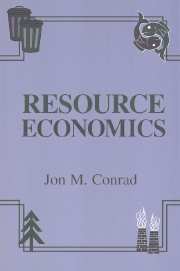Book contents
7 - Option Value and Risky Development
Published online by Cambridge University Press: 05 June 2012
Summary
Introduction and Overview
In this chapter we consider the desirability and timing of projects which might irreversibly alter a natural environment. A large hydroelectric or irrigation project might necessitate the construction of a reservoir, which may inundate a sizable area behind a dam, alter the hydrological processes of a free-flowing river, and be very costly to remove. The cutting of an old-growth forest and the conversion of land to agriculture or other uses might also be viewed as irreversible developments. Risk or uncertainty is present if the future net benefits of development, or the benefits of continued preservation, are not known when a decision about starting the project must be made.
Evaluating the desirability of an investment project has traditionally drawn upon a body of economic theory and methods referred to as cost-benefit analysis. This is a sizable literature examining (i) the theoretical foundations of cost–benefits analysis, (ii) the appropriate formulas to evaluate the desirability of a project and, (iii) the complications that arise when there is unemployment, imperfect competition, government regulation, or different opportunity costs for resources that are diverted from the private sector of an economy. It is not possible to cover all these topics, and the next section will review the basic formulas used to calculate a benefit–cost ratio, the present value of net benefits, a project's internal rate of return, and the return on invested capital.
- Type
- Chapter
- Information
- Resource Economics , pp. 141 - 165Publisher: Cambridge University PressPrint publication year: 1999



